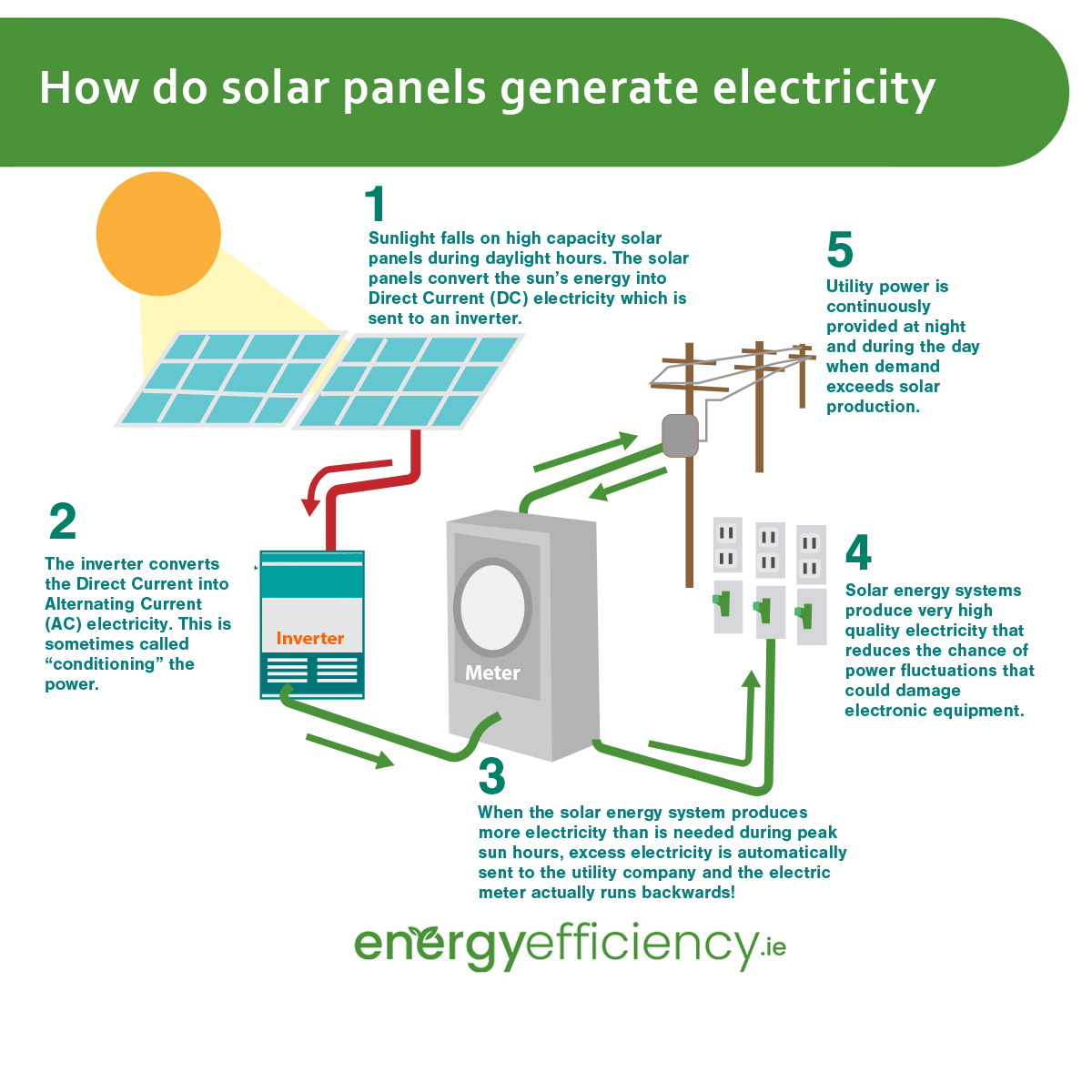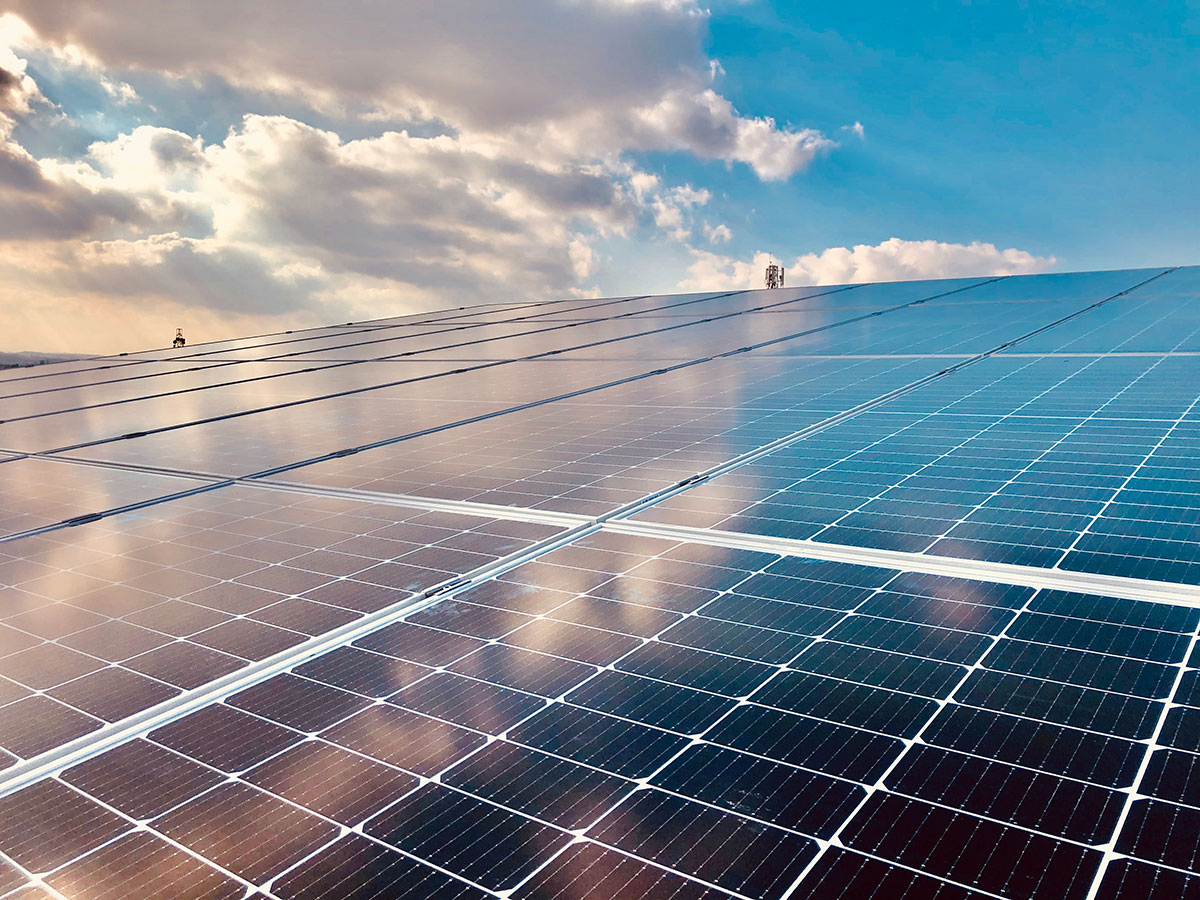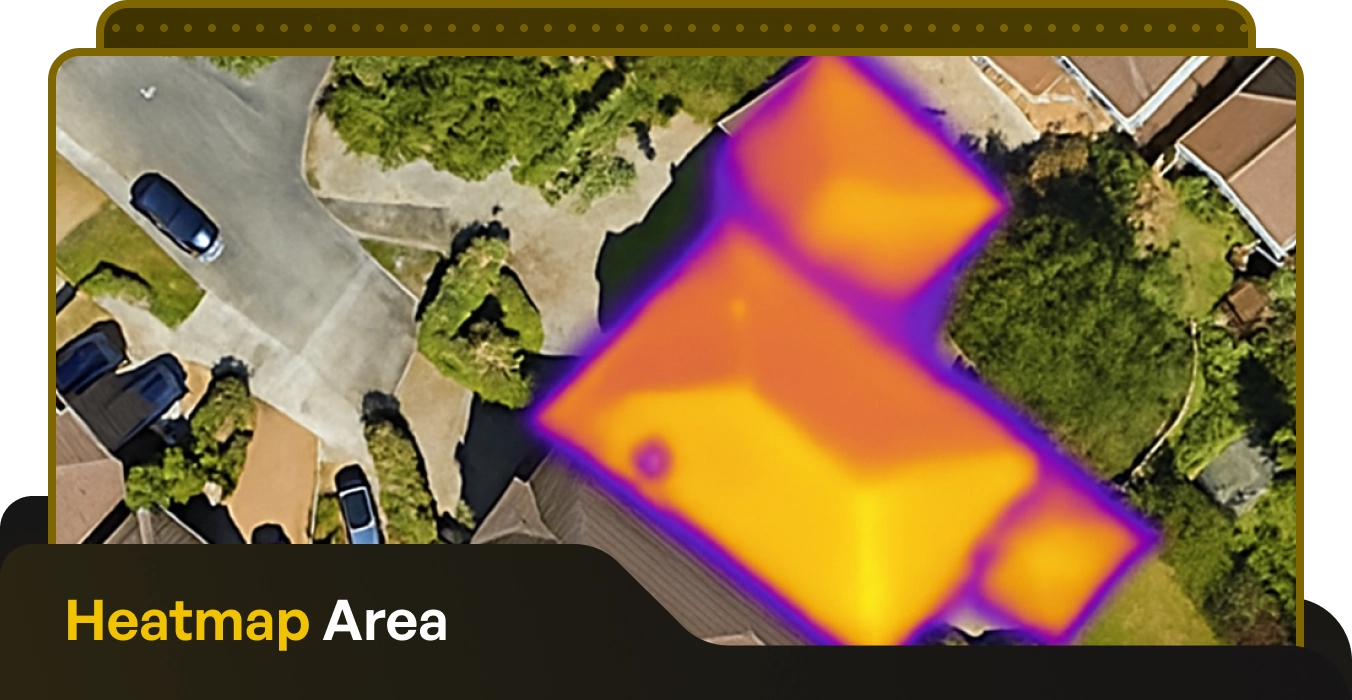What are PERC Solar Cells

Written by: Briain Kelly
Published: June 14, 2024
Last updated: October 8, 2025
Reading time: 3 mins
PERC solar cells, standing for either Passivated Emitter and Rear Cell or Passivated Emitter and Rear Contact, are a type of solar cell design which is meant to tackle some of the issues which limit the efficiency of traditional solar panels.
Solar panels incorporating PERC technology have been able to achieve efficiencies up to 5-6% higher than in traditional designs predating it, at a time when solar PV was struggling to get up to 20% efficiency.
How do Solar Panels Generate Electricity
Solar panels create electricity through the flow of electrons from the n-type layer of the silicon semiconductor into the p-type layer. In the n-type layer free electrons are abundant, while in the p-type layer, there are more ‘holes’ where electrons could fit into.
When sunlight strikes a solar panel it causes those free electrons in the n-type layer to become excited and pass through the contact point. This generates an electric current which either passes along the strong through the other solar panels, or out into the load.
Afterwards, the electron comes back into the p-type layer to recombine with a corresponding hole layer.
However, this process does not work as intended. Sometimes electrons recombine with holes when they strike the silicon on the front or rear of the solar cell without ever passing through the contact point.
This process is called surface recombination, and anytime it occurs there is a loss of electricity which could have been generated as the e-h pair.
Traditional solar panels which were designed with an Aluminium Back Surface Face (Al-BSF) were highly susceptible to rear surface recombination, as well as overheating from absorbing sunlight.

How PERC Solar Cells Work
PERC solar cells are designed to reduce the level of surface recombination suffered in traditional solar panels through the use of a process called passivation.
The key to PERC solar cells is the addition of a surface passivation layer of silicon nitride (SiN) or Aluminium Oxide (AlO) layers to the surfaces of the solar cell, or possibly to both the front and rear. These layers reduce the amount of surface recombination and reflect light back into the solar cell.
The passivation layers act as insulation which reduces contact between the silicon of the solar cell and the metal back surface, where recombination occurs, except at the contacts.
PERC solar panels are available in both monocrystalline and polycrystalline designs, as there is little alteration to the manufacturing process.
The key elements of PERC Solar Cells are:
- Front and Rear passivation layers.
- Front of cell texturing
- Laser ablation of the rear dielectric passivation layer
Advantages of PERC Solar Cells
PERC solar cells offer a number of advantages in improving the efficiency and cost-effectiveness of solar panels compared with traditional panels, and can compete with newer technologies such as TOPCon or Heterojunction solar cells.
By cutting down the amount of free electrons lost to recombination PERC solar cells can deliver significantly greater levels of efficiency with only moderate alterations to the manufacturing process.
The passivation layer both reduces the surface recombination of e-h pairs, as well as reflects light back into the solar cell, allowing more of it to be used. Both of these factors can help push the efficiency of PERC solar cells past 24%.
The reflective surface on the rear of the solar cell means that PERC solar panels can extract a greater degree of power from lower levels of irradiance than panels without it.
In addition, the back surface passivation layer helps to reduce overheating of the solar cells. The silicon layer in a solar panel is only designed to absorb certain wavelengths of light. Solar energy which exists above this wavelength passes through the silicon and can be absorbed by the back sheet of the solar panel.
Solar panels lose efficiency at higher temperatures, and having the passivation layer at the rear cuts down the amount of heat which is absorbed.
Solar Panels with PERC offer an excellent balance of high performance and manageable costs for solar panels compared with older and newer technologies. Only small changes need to be made to the manufacturing process to add a passivation layer to the solar cells, but they can deliver significant leaps in efficiency.
Newer technologies such as TOPCon and Heterojunction solar cells are more efficient than PERC modules. However, the trade-off here is that being newer and with a more complex manufacturing process, they are more expensive.
The increased module efficiency allowed by PERC solar cells allows solar panel arrays to deliver the same output with fewer or smaller panels. This is particularly beneficial for rooftop solar where space is a premium.
Development of PERC Solar Panels
PERC solar cells were first developed at the University of South Wales over the course of the 1980s, but it would be many decades until they would see commercial use.
For a long time complex manufacturing elements such as using photolithography to create contact windows in the rear dielectric layer, or limitations in the early use of silicon oxide (SiO) as a passivating chemical made it impractical for them to see commercial use.
Another issue which prevented the adoption of PERC technology into solar panels for many years was that it was more susceptible to Light Induced Degradation (LID) and Potential Induced Degradation (PID) than traditional solar panel designs.
However, those various limitations have since been overcome by manufacturers, with PERC solar panels first coming on the market in the 2010s.

Future of PERC Solar Panels
In 2017 PERC cells accounted for 20GW of new capacity, roughly 8% of the global new capacity, but this figure has only grown since and is expected to continue to do so.
Over the course of the 2020s, PERC technology is expected to become present in up to 50% of the global solar PV industry over the course of the decade, taking a dominant position in the market.
With a huge push towards solar energy in order to meet climate targets globally the scalability of manufacturing is a key concern. PERC solar panels offer efficiency levels close to what the very best solar cells can offer, with far easier manufacturing processes.
What are PERC Solar Cells
Published: June 14, 2024
Last updated: October 8, 2025

Written by: Briain Kelly
Reading time: 3mins
PERC solar cells, standing for either Passivated Emitter and Rear Cell or Passivated Emitter and Rear Contact, are a type of solar cell design which is meant to tackle some of the issues which limit the efficiency of traditional solar panels.
Solar panels incorporating PERC technology have been able to achieve efficiencies up to 5-6% higher than in traditional designs predating it, at a time when solar PV was struggling to get up to 20% efficiency.
How do Solar Panels Generate Electricity
Solar panels create electricity through the flow of electrons from the n-type layer of the silicon semiconductor into the p-type layer. In the n-type layer free electrons are abundant, while in the p-type layer, there are more ‘holes’ where electrons could fit into.
When sunlight strikes a solar panel it causes those free electrons in the n-type layer to become excited and pass through the contact point. This generates an electric current which either passes along the strong through the other solar panels, or out into the load.
Afterwards, the electron comes back into the p-type layer to recombine with a corresponding hole layer.
However, this process does not work as intended. Sometimes electrons recombine with holes when they strike the silicon on the front or rear of the solar cell without ever passing through the contact point.
This process is called surface recombination, and anytime it occurs there is a loss of electricity which could have been generated as the e-h pair.
Traditional solar panels which were designed with an Aluminium Back Surface Face (Al-BSF) were highly susceptible to rear surface recombination, as well as overheating from absorbing sunlight.

How PERC Solar Cells Work
PERC solar cells are designed to reduce the level of surface recombination suffered in traditional solar panels through the use of a process called passivation.
The key to PERC solar cells is the addition of a surface passivation layer of silicon nitride (SiN) or Aluminium Oxide (AlO) layers to the surfaces of the solar cell, or possibly to both the front and rear. These layers reduce the amount of surface recombination and reflect light back into the solar cell.
The passivation layers act as insulation which reduces contact between the silicon of the solar cell and the metal back surface, where recombination occurs, except at the contacts.
PERC solar panels are available in both monocrystalline and polycrystalline designs, as there is little alteration to the manufacturing process.
The key elements of PERC Solar Cells are:
- Front and Rear passivation layers.
- Front of cell texturing
- Laser ablation of the rear dielectric passivation layer
Advantages of PERC Solar Cells
PERC solar cells offer a number of advantages in improving the efficiency and cost-effectiveness of solar panels compared with traditional panels, and can compete with newer technologies such as TOPCon or Heterojunction solar cells.
By cutting down the amount of free electrons lost to recombination PERC solar cells can deliver significantly greater levels of efficiency with only moderate alterations to the manufacturing process.
The passivation layer both reduces the surface recombination of e-h pairs, as well as reflects light back into the solar cell, allowing more of it to be used. Both of these factors can help push the efficiency of PERC solar cells past 24%.
The reflective surface on the rear of the solar cell means that PERC solar panels can extract a greater degree of power from lower levels of irradiance than panels without it.
In addition, the back surface passivation layer helps to reduce overheating of the solar cells. The silicon layer in a solar panel is only designed to absorb certain wavelengths of light. Solar energy which exists above this wavelength passes through the silicon and can be absorbed by the back sheet of the solar panel.
Solar panels lose efficiency at higher temperatures, and having the passivation layer at the rear cuts down the amount of heat which is absorbed.
Solar Panels with PERC offer an excellent balance of high performance and manageable costs for solar panels compared with older and newer technologies. Only small changes need to be made to the manufacturing process to add a passivation layer to the solar cells, but they can deliver significant leaps in efficiency.
Newer technologies such as TOPCon and Heterojunction solar cells are more efficient than PERC modules. However, the trade-off here is that being newer and with a more complex manufacturing process, they are more expensive.
The increased module efficiency allowed by PERC solar cells allows solar panel arrays to deliver the same output with fewer or smaller panels. This is particularly beneficial for rooftop solar where space is a premium.
Development of PERC Solar Panels
PERC solar cells were first developed at the University of South Wales over the course of the 1980s, but it would be many decades until they would see commercial use.
For a long time complex manufacturing elements such as using photolithography to create contact windows in the rear dielectric layer, or limitations in the early use of silicon oxide (SiO) as a passivating chemical made it impractical for them to see commercial use.
Another issue which prevented the adoption of PERC technology into solar panels for many years was that it was more susceptible to Light Induced Degradation (LID) and Potential Induced Degradation (PID) than traditional solar panel designs.
However, those various limitations have since been overcome by manufacturers, with PERC solar panels first coming on the market in the 2010s.

Future of PERC Solar Panels
In 2017 PERC cells accounted for 20GW of new capacity, roughly 8% of the global new capacity, but this figure has only grown since and is expected to continue to do so.
Over the course of the 2020s, PERC technology is expected to become present in up to 50% of the global solar PV industry over the course of the decade, taking a dominant position in the market.
With a huge push towards solar energy in order to meet climate targets globally the scalability of manufacturing is a key concern. PERC solar panels offer efficiency levels close to what the very best solar cells can offer, with far easier manufacturing processes.
Solar Energy Saves Households Thousands in Electricity Costs
Take our 2-minute questionnaire and find affordable solar options to suit your budget and lifestyle.



